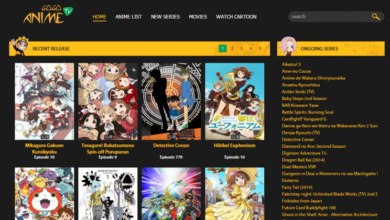Ankha Dancing: How a Digital Feline Took Over the Internet

In the vast landscape of internet culture, memes often emerge from the most unexpected places. One of the most peculiar and captivating examples in recent years is the phenomenon widely known as “Ankha Dancing” — a viral animation featuring a character from the Animal Crossing game franchise, set to a hypnotic Egyptian-inspired beat. This animated loop exploded on platforms like TikTok, YouTube, Twitter, and Reddit, igniting an entire wave of fan art, remixes, parodies, and controversial conversations.
But how did a minor video game character dancing to a catchy tune turn into a global meme trend? In this article, we’ll dive deep into the origin, music, meme history, cultural interpretations, and the internet’s obsession with “Ankha Dancing.”
Who Is Ankha? The Character Behind the Meme
To understand “Ankha Dancing,” you first need to know who Ankha is.
Ankha is a character from Nintendo’s Animal Crossing series, a franchise that has captivated players for decades. Animal Crossing is a life-simulation game where players live in a village inhabited by anthropomorphic animals. Ankha stands out due to her distinct Egyptian theme — her name is derived from the Egyptian hieroglyph “ankh,” meaning life, and her appearance resembles that of Cleopatra or a pharaoh.
Ankha’s Characteristics:
-
Species: Cat
-
Appearance: Gold and navy-blue striped fur, wearing a traditional Egyptian headdress and makeup
-
Personality: Snooty — she’s elegant, self-assured, and sometimes a bit dismissive
-
Catchphrase: “Me meow”
Although Ankha has existed in Animal Crossing since the early 2000s, her rise to meme fame began decades later — with the help of a viral video and an unmistakable tune.
The Origin of “Ankha Dancing” and the Zone Animation
The animation that propelled Ankha to meme stardom was not created by Nintendo, but by an independent animator known online as Zone (Zone-Tan or Zone-Sama). Known primarily for adult-themed Flash animations and parodies, Zone’s work often circulates in niche online communities. In early 2021, Zone released an animation titled “Ankha Zone”, depicting Ankha dancing suggestively in a looping format.
The video took off primarily due to its catchy background music — a remix of the 1970s Egyptian pop-style song “Camel by Camel” by Sandy Marton. The sultry melody combined with the animation’s fluidity and Ankha’s recognizable appearance made it instantly shareable, remixable, and meme-worthy.
Key Elements of the Viral Animation:
-
Music: “Camel by Camel” by Sandy Marton (also known as “Ankha Zone Music”)
-
Style: Looping 2D animation
-
Theme: Egyptian aesthetic with retro lo-fi vibes
-
Context: Originally adult in nature, but widely repurposed for SFW (safe-for-work) content
Although the animation was explicit in its original form, most viral versions online are cropped or edited to feature only Ankha’s dance movements with the music loop. This sanitized version is what’s known as “Ankha Dancing.”
Rise to Meme Stardom: From TikTok to Global Phenomenon
The meme culture surrounding “Ankha Dancing” evolved rapidly in early and mid-2021. By the time the edited version of the animation started circulating on TikTok, it had already taken on a life of its own — and it didn’t take long before it exploded into full virality.
Platforms Where It Went Viral:
-
TikTok: Used in humorous or absurdist skits with Ankha’s dance looped to the song
-
YouTube Shorts: Reaction videos, remixes, dance covers
-
Twitter & Reddit: Debates over appropriateness, fan art, and layered memes
-
Discord & Forums: NSFW versions shared, discussions about the original content
Creators used the animation and music in a variety of creative ways, often with unexpected video cuts, ironic juxtapositions, or humorous narratives. It became a staple sound effect for comedic punchlines, surreal edits, or cultural parody.
The virality led to:
-
Millions of views across reposted and edited versions
-
Thousands of meme formats, including “walking in on someone watching Ankha Zone” jokes
-
Fan-made remixes, including orchestral, trap, lo-fi, and nightcore versions of “Camel by Camel”
-
AI parodies, where famous characters or celebrities were animated or voice-synthesized over the music
The meme’s success also fueled massive searches for “Ankha Zone original video” — although many platforms like YouTube and TikTok removed links to the explicit version due to community guidelines.
Cultural Reactions and Controversy
As with many internet memes that originate from NSFW or niche fan communities, “Ankha Dancing” sparked its share of controversy and cultural debate. While the safe-for-work version gained meme status, the video’s adult roots prompted concerns — especially among parents, teachers, and platforms monitoring youth content.
Key Points of Controversy:
-
YouTube and TikTok Guidelines: The original animation was taken down or flagged due to sexual content
-
Children’s Exposure: Since Animal Crossing is a family-friendly game, many were concerned that younger fans might unintentionally stumble across the explicit version
-
Creator Discussions: Some praised the animation’s quality and humor, while others criticized using a children’s game character in a suggestive context
-
Nintendo’s Stance: As of now, Nintendo has not issued any official takedown or public comment on the meme
Despite the controversy, most of the widespread popularity was driven by edited, non-explicit versions that focused on the quirky combination of music, animation, and cultural remixing.
Interestingly, many users who had never played Animal Crossing or didn’t know Ankha’s origin became fans due to the meme — bringing fresh attention to Nintendo’s game and its characters.
The Legacy of Ankha Dancing and the Future of Character Memes
The “Ankha Dancing” meme joins a long lineage of internet content where fictional characters are reinterpreted through digital remix culture. From Shrek remixes to Spongebob edits, this type of meme reflects a global internet phenomenon — where fandom, irony, and musicality blend into unexpected virality.
Why Ankha Dancing Worked:
-
Visual Simplicity: The looping dance is hypnotic and easy to repurpose
-
Unique Music: Sandy Marton’s retro beat is catchy, weird, and distinct
-
Aesthetic Vibes: The Egyptian theme and lo-fi visuals match TikTok and meme culture’s love for nostalgia
-
Unexpected Origins: The combination of an obscure game character and a 1980s synth song created curiosity
Even though the initial wave of virality has passed, “Ankha Dancing” remains a case study in how meme culture can elevate a forgotten character into meme immortality. In fact, Ankha continues to appear in new meme formats, fan games, and remix videos — keeping the spirit of the trend alive.
Future of Similar Memes:
-
As AI animation tools and deepfake tech improve, we’re likely to see more memes like Ankha Zone emerge from fan content.
-
Remix culture continues to thrive, especially with platforms like TikTok and YouTube Shorts promoting loopable, musically driven animations.
-
Nintendo fans, animators, and musicians will likely build more content around niche or underrated game characters, combining fandom with digital creativity.
Conclusion: More Than a Meme — A Digital Time Capsule
The story of Ankha Dancing is more than just an internet joke — it’s a reflection of how fandom, music, humor, and animation can intersect in powerful ways. What started as an adult animation turned into a global remix phenomenon, introducing people to new music, reviving interest in old characters, and giving creators a platform to flex their creative muscles.
In a world where meme culture evolves rapidly, Ankha’s viral dance is a digital time capsule of internet humor in the early 2020s. Whether you’re a gamer, a musician, a meme lover, or just someone who stumbled upon the beat one day, Ankha’s hypnotic sway is a reminder that sometimes, the strangest combinations make the most iconic trends.




